Supernatural Beliefs Of Medieval People – From Elves And Fairies To Abductions And The Undead
AncientPages.com - Medieval people have a reputation for being superstitious – and many of the supernatural phenomena found in the pages of medieval chronicles, miracle stories and romances are still alive in modern culture. Think ghosts, werewolves, demons, vampires, fairies and witches. But while (almost all) people today regard these beings as entirely fictional, many medieval people believed in them.
A siren and a centaur depicted in a bestiary (1278–1300). Courtesy of the Getty Open Content Program
Christian theologians accepted the existence of the supernatural, categorising such beings broadly as “fallen angels” who viewed humanity as a battleground in their ongoing conflict with God. Their enormous power meant they could even appear as deities, including the pagan gods and goddesses – they were seen to take on a monstrous appearance mainly when claiming the souls of the damned or being defeated by a Christian leader.
The smaller and less powerful supernatural creatures known in Old and Middle English as “elves”, however, were seen to have less straightforward explanations.
Elves, fairies and sirens
Medieval elves were not usually as powerful as the glamorous beings envisioned centuries later by J.R.R. Tolkien. They merged with demons in some accounts and with fairies in others.
For the 13th-century English priest Layamon, it was elves (alven) who gave King Arthur magical gifts and who, in the form of beautiful women, carried him away to the mythical island of Avalun to heal. However, Layamon was careful to say that this was the belief of “the Britons” (Celtic people), which he was simply recording.
Fairies first appeared in French-language accounts and quickly blended with other categories of supernatural being. They were apparently more human in appearance than elves, though wings were added later.
Melusine’s Secret Discovered, from Le Roman de Mélusine (circa 1450). National Library of France
They formed one category of the large group of tempting, supernatural female creatures who lured human men into dangerous relationships. Perhaps most famous is the fairy Melusine, who was strongly linked to water.
Melusine was half-human, half-serpent and was both beautiful and powerful. She brought prosperity and numerous sons to her human husband, but forbade him to see her at a specified time (Saturdays). When he broke his promise, Melusine’s true form was revealed, and she left forever.
It is unclear whether the chroniclers and readers who enjoyed such stories entirely believed them, but it seems likely that fairies were considered more real in the middle ages than now.
Medieval abductions and miracles
For medieval people, elves, fairies and sirens inhabited the ambiguous territory between fact and fiction. The same may be said of mysterious beings who abducted unsuspecting humans, often women, and carried them off to strange and frightening regions. Those who allegedly reported these experiences believed them to be real, although they were condemned as demonic illusions by moralists.
Depiction of a miracle from 1531. The Book of Miracles
Being taken high above the Earth is a recurring theme in medieval writing, including tales of witches deliberately flying on the backs of animals. These abduction tales could be compared to modern accounts of alien abductions.
A siren and a centaur as depicted in a French bestiary (circa 1270). Courtesy of the Getty Open Content Program
While tales of abduction by fairies were sometimes dismissed as delusions, stories of saints’ miracles and natural marvels were usually accepted as true. It might be tempting to compare the powers of miracle-working saints with those of modern superheroes – but miracles were considered overt demonstrations of the power of God, whereas superheroes tend to result from scientific or technological extremes.
A particularly sensational example was recorded in the Life of St Modwenna (an early Irish princess and abbess), written by the abbot Geoffrey of Burton circa 1120-1150. In his account, two tenants of Burton Abbey stirred up a violent feud between the abbot and Count Roger the Poitevin. The troublemakers died suddenly and were buried in haste, but apparently reappeared at sunset carrying their own coffins, before transforming into terrifying animals.
A revenant rises from his grave (16th-century facsimile). Bavarian State Library, Munich
These revenants (spirits or animated corpses) reportedly brought death to the village – only three people were left alive. When the graves of the runaways were opened, they were found to be bloodstained but intact. A formal apology to the abbey and the saint was followed by ritual dismembering of these corpses and burning of their hearts. This apparently led to the expulsion of an evil spirit and the recovery of the surviving peasants.
Natural marvels
“Natural marvels” were medieval phenomena which were accepted as parts of God’s creation, but could not be scientifically explained. Many of the creatures found in bestiaries (medieval encyclopedias of animals both real and mythological) fitted here, such as dragons, unicorns and basilisks.
Dragons and unicorns remain popular fantasy characters today, but basilisks are less well known – although a giant one once proved a fearsome opponent for Harry Potter. Basilisks were said to be so poisonous that their scent, their fiery breath and even their gaze could kill. They were attested not only by bestiaries but by the Roman philosopher and botanist Pliny in his book Natural History (circa AD77). They were found in the province of Cyrene, in modern Libya.
A basilisk depicted in a bestiary (circa 1200-1225). British Library
Similarly, different regions of the Earth were characterised by natural marvels recorded in works such as priest and historian Gerald of Wales’s book, The History and Topography of Ireland (1185-88).
Gerald noted that some readers would find his stories “impossible or ridiculous”, but testified to their accuracy. They included strange islands where no female creature could survive and nobody could die a natural death, as well as strange creatures and humans forced to transform periodically into wolves by the power of St Natalis (an Irish monk and saint).
Medieval people believed in a wide array of supernatural beings. While today we mostly see them as the stuff of nightmarish fiction, our enthusiasm for this diversity hasn’t waned – just look at the breadth of supernatural costumes on display every Halloween.
Provided by The Conversation
This article is republished from The Conversation under a Creative Commons license. Read the original article.
More From Ancient Pages
-
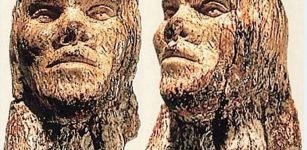 Incredible Mammoth Ivory Male Head From Dolni Vestonice, Czech Dated To 26,000 BC
Artifacts | Jun 23, 2015
Incredible Mammoth Ivory Male Head From Dolni Vestonice, Czech Dated To 26,000 BC
Artifacts | Jun 23, 2015 -
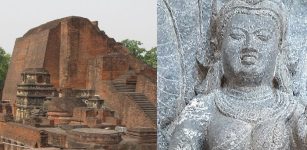 Unique 1,300-Year-Old Pala Period Idol Of Snake Goddess, Nag Devi Discovered Near Nalanda University, India
Archaeology | Apr 5, 2022
Unique 1,300-Year-Old Pala Period Idol Of Snake Goddess, Nag Devi Discovered Near Nalanda University, India
Archaeology | Apr 5, 2022 -
 Controversial Evidence – Ancient Chinese Visited America 2,500 Years Ago
Civilizations | May 9, 2015
Controversial Evidence – Ancient Chinese Visited America 2,500 Years Ago
Civilizations | May 9, 2015 -
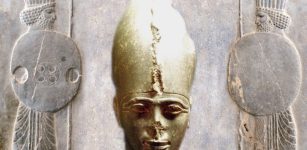 Pharaoh Psamtik III’s Deadly Encounter With Cambyses II Of Persia Ended The 26th Dynasty Of Egypt
Featured Stories | Apr 16, 2021
Pharaoh Psamtik III’s Deadly Encounter With Cambyses II Of Persia Ended The 26th Dynasty Of Egypt
Featured Stories | Apr 16, 2021 -
 Hulagu Khan Destroyed Thousands Of Priceless Ancient Books Kept In The House Of Wisdom In Baghdad
Ancient History Facts | Jun 21, 2018
Hulagu Khan Destroyed Thousands Of Priceless Ancient Books Kept In The House Of Wisdom In Baghdad
Ancient History Facts | Jun 21, 2018 -
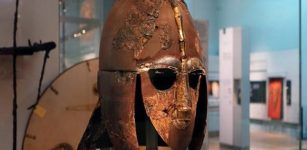 Burial Practices In Unified Cultures Of Early Medieval Europe
Archaeology | Jan 22, 2021
Burial Practices In Unified Cultures Of Early Medieval Europe
Archaeology | Jan 22, 2021 -
 Katanga Cross: Symbol Of Secrets, Power And Valuable Currency Of The Congolese People
Ancient Symbols | Sep 10, 2018
Katanga Cross: Symbol Of Secrets, Power And Valuable Currency Of The Congolese People
Ancient Symbols | Sep 10, 2018 -
 Magnificent New Trove Of Ancient Egyptian Artifacts And 250 Mummies At The Saqqara Necropolis
Archaeology | May 30, 2022
Magnificent New Trove Of Ancient Egyptian Artifacts And 250 Mummies At The Saqqara Necropolis
Archaeology | May 30, 2022 -
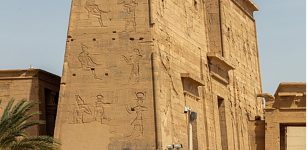 Researchers Use 21st Century Methods To Record 2,000 Years Of Ancient Graffiti In Egypt
Archaeology | Mar 31, 2023
Researchers Use 21st Century Methods To Record 2,000 Years Of Ancient Graffiti In Egypt
Archaeology | Mar 31, 2023 -
 How Did A Roman Sarcophagus End Up On A Beach Near Varna In Bulgaria?
Archaeology | Aug 6, 2024
How Did A Roman Sarcophagus End Up On A Beach Near Varna In Bulgaria?
Archaeology | Aug 6, 2024 -
 Cato The Younger – Mortal Enemy Of Julius Caesar Was A Man Who Hated Luxury, New Ideas And Was Immune To Bribes
Featured Stories | Mar 18, 2025
Cato The Younger – Mortal Enemy Of Julius Caesar Was A Man Who Hated Luxury, New Ideas And Was Immune To Bribes
Featured Stories | Mar 18, 2025 -
 Nottingham Scientists Investigate An Ancient Boat Buried Under A Pub Car Park
Archaeology | Feb 15, 2023
Nottingham Scientists Investigate An Ancient Boat Buried Under A Pub Car Park
Archaeology | Feb 15, 2023 -
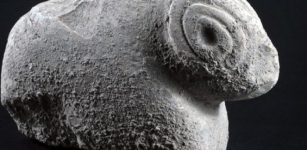 Two Stone Age 9,500-Year-Old Artifacts Unearthed In Tel Motza
Archaeology | Sep 3, 2012
Two Stone Age 9,500-Year-Old Artifacts Unearthed In Tel Motza
Archaeology | Sep 3, 2012 -
 Armenians’ Origin Theory By Herodotus Debunked By New DNA Study
DNA | Nov 27, 2024
Armenians’ Origin Theory By Herodotus Debunked By New DNA Study
DNA | Nov 27, 2024 -
 Hyperborea Or Atlantis Ruins – Underground Secrets Of The Sacred Lake On The Arctic Circle
Civilizations | Nov 17, 2014
Hyperborea Or Atlantis Ruins – Underground Secrets Of The Sacred Lake On The Arctic Circle
Civilizations | Nov 17, 2014 -
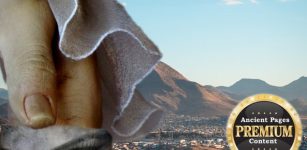 Mystery Of Mexico’s Bizarre Mummy May Never Be Solved
Featured Stories | Sep 17, 2024
Mystery Of Mexico’s Bizarre Mummy May Never Be Solved
Featured Stories | Sep 17, 2024 -
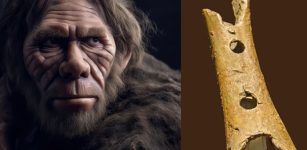 Remarkable Neanderthal Flute Found In Divje Babe Cave Is The World’s Oldest Musical Instrument
Artifacts | Dec 11, 2023
Remarkable Neanderthal Flute Found In Divje Babe Cave Is The World’s Oldest Musical Instrument
Artifacts | Dec 11, 2023 -
 Abu Simbel – Spectacular Ancient Egyptian Temples Unique In Design And Size
Featured Stories | Jun 12, 2021
Abu Simbel – Spectacular Ancient Egyptian Temples Unique In Design And Size
Featured Stories | Jun 12, 2021 -
 Bazira – Lost City Of Alexander The Great Discovered In Pakistan
Archaeology | May 7, 2019
Bazira – Lost City Of Alexander The Great Discovered In Pakistan
Archaeology | May 7, 2019 -
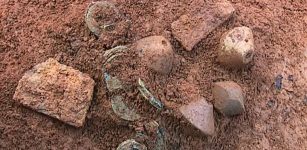 2,000-years-old tomb found in S. China
Archaeology | Apr 6, 2016
2,000-years-old tomb found in S. China
Archaeology | Apr 6, 2016






